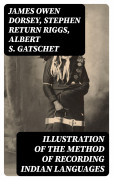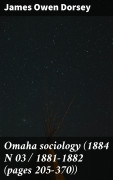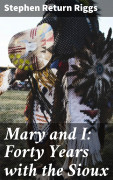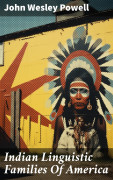James Owen Dorsey, Stephen Return Riggs, Albert S. Gatschet: Illustration of the Method of Recording Indian Languages
From the First Annual Report of the Bureau of Ethnology, Smithsonian Institution

| Produkttyp: | eBook-Download |
|---|---|
| Verlag: | Good Press |
| Erschienen: | |
| Sprache: | Englisch |
| Seiten: | 114 (Druckfassung) |
| Format: | EPUB
Info▼
|
| Download: | 575 kB |
In 'Illustration of the Method of Recording Indian Languages,' an anthology that bridges the gap between anthropology and linguistics, the overarching themes of historical preservation and linguistic diversity are explored through a variety of methodologies and literary styles. The collection stands as a testament to the rich and varied tapestry of Indigenous American languages, encapsulating not only the linguistic uniqueness of each but also the cultural narratives embedded within. Highlighting groundbreaking work in the field, it serves as an indispensable resource for understanding the intricacies of recording and studying endangered languages, ensuring their preservation for future scholarly investigation. The contributing authors, James Owen Dorsey, Stephen Return Riggs, and Albert S. Gatschet, were pioneers in their field, each contributing significantly to our understanding of Indigenous languages and cultures within the United States. Coming from diverse backgrounds but united by their groundbreaking work in ethnology and linguistics, their collective efforts within this anthology underscore the importance of interdisciplinary approaches in capturing the complex nuances of Indigenous languages. Their work aligns with broader movements toward the preservation and revitalization of minority languages, offering important historical and cultural insights. This anthology is recommended for scholars, linguists, historians, and anyone with a deep interest in the preservation of Indigenous languages and cultures. It provides a unique window into the methodologies of recording and analyzing languages that are at risk of being lost, offering a multitude of perspectives, styles, and themes. By engaging with this collection, readers are afforded an educational journey that not only expands their knowledge but also emphasizes the critical importance of linguistic and cultural diversity in shaping our understanding of human history.











